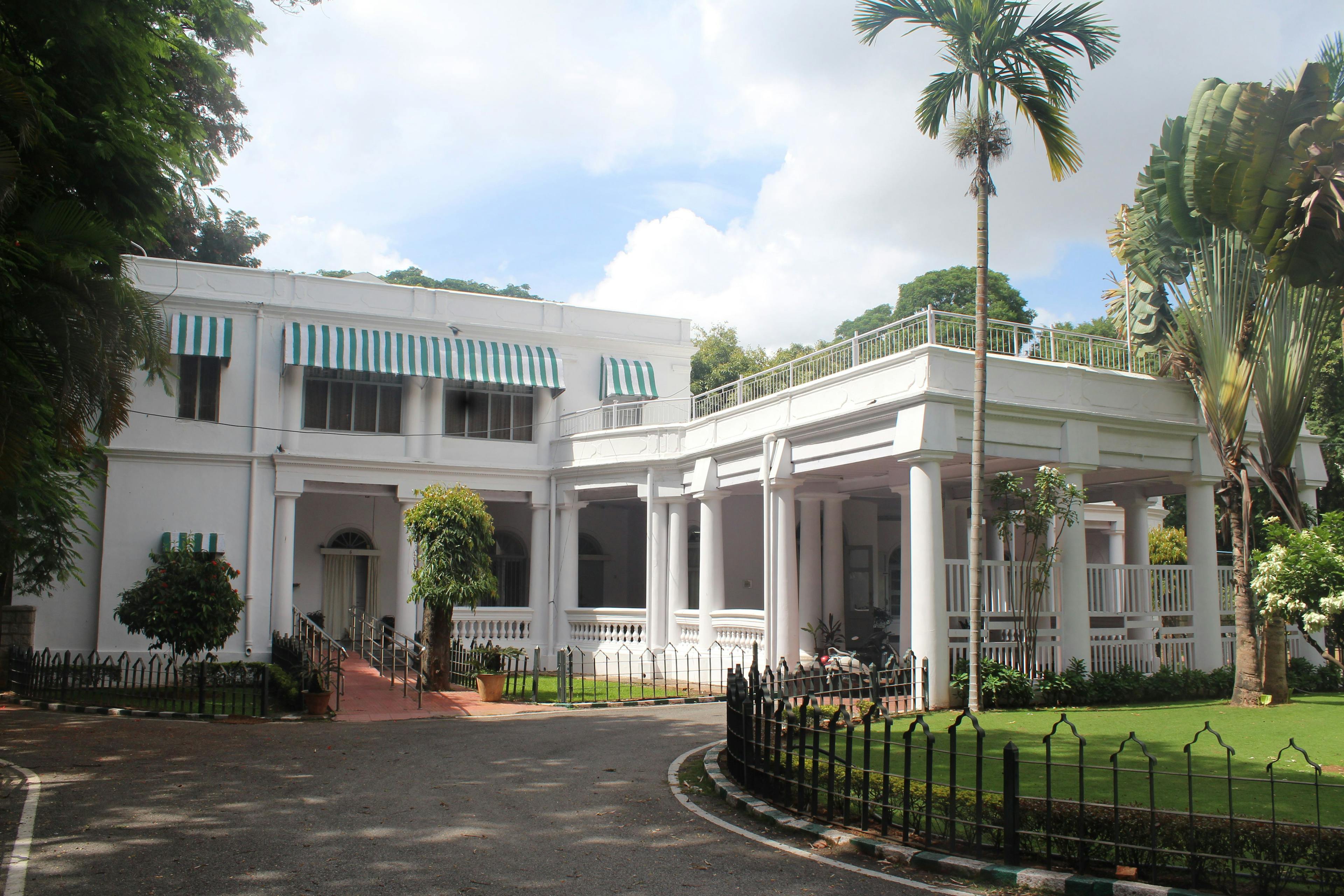Bengaluru’s Balabrooie House - Historic & Jinxed?
BOOKMARK
Built in 1850, spread over 16 acres and surrounded by 150 varieties of centuries-old trees, Balabrooie is a quiet, green island of history in Bangalore's rapidly urbanising chaos. Lying in a corner of town, across the city’s historic Golf Club, the colonial mansion has been a witness to the city's glorious history and home to many of the men who shaped Bangalore.
Yet, its elegant, serene appearance and notable history belies its reputation as being a jinxed building!
– Balabrooie’s peculiar name, which means ‘river bank farm’, is inspired by the childhood home of Sir Mark Cubbon
Balabrooie's peculiar name, which means 'river bank farm’, is inspired by the childhood home of Sir Mark Cubbon , who was the first resident of this mansion. Hailing from the Isle of Man, where such names were common for houses, Cubbon who never managed to go back home in his lifetime, probably named his house ‘Balabrooie’ to capture a slice of his faraway birth-place.
Cubbon was the first and longest serving district commissioner of Mysore between 1831-1860 when the state had come under British control. Perhaps the most well-known British administrator in the region, Cubbon brought in many developments to Bangalore, even as the state of Mysore greatly prospered under his leadership. He had a deep love for India and its traditions and was considered to be a fair and efficient administrator.
– Cubbon bought the house that was to be christened Balabrooie from the legendary Persian horse trader, Agha Ali Asker
Being a horse lover and maintaining as many as sixty horses in his stables at a time, he bought the house that was to be christened Balabrooie from the legendary Persian horse trader, Agha Ali Asker. The climate of Bangalore made it highly suitable for horse breeding which attracted numerous horse traders. Asker was one of the most successful traders of his time and this allowed him to acquire vast properties in the city where he built a number of bungalows. Balabrooie was one of the most stately of them.
When Cubbon passed away, the house went to his successor, Sir Frank Bower. The house went on to remain the residence of the Commissioners of Mysore until India gained independence in 1947.
– Balabrooie has entertained distinguished guests prior to Independence such as Jawaharal Nehru, Mahatma Gandhi, and Rabrindanath Tagore
Balabrooie has been the site of several significant political developments as well as a home to major state leaders. It has also entertained distinguished guests prior to Independence such as Jawaharal Nehru, Mahatma Gandhi, and Rabrindanath Tagore, who stayed here several times. Arriving from Colombo to recover from a bout of ill-health in May 1928, Tagore the Nobel Laureate spent three weeks here and is said to have written two of his famed works, Shesher Kobita and some instalments of Yogayog while in residence here
So how did this building, widely regarded for both its beautiful European classical appearance and being a political landmark earn the reputation of being jinxed?
It began in 1980 when the then Karnataka Chief Minister, R. Gundu Rao opted to stay in another government bungalow as he felt that the Balabrooie suffered from various ‘vaastu’ defects. His successor also opted to stay in his personal residence. However, when S. Bommai came to power in August 1988, he dismissed the superstition surrounding the building and moved to Balabrooie.
– In 1980, then Karnataka Chief Minister, R. Gundu Rao opted to stay in another government bungalow as he felt that the Balabrooie suffered from various ‘vaastu’ defects.
But then disaster struck for him and his government lost power within six months, in April 1989, due to the defection of his party MLAs. This cemented Balabrooie’s reputation of being jinxed. Since then no Chief Minister has lived in this stately residence. Instead, the house is now officially a government guest-house.
In fact, Balabrooie was in danger of being demolished and replaced with a new legislative club-house in 2014; it was only after concerted and collective efforts and protests by citizens and heritage lovers and conservationists that the plans were axed.
Today Balabrooie stands strong, albeit still forlorn…
– AUTHOR
Priyanka Sacheti is an independent writer-editor based in Bangalore. Raised in Oman and educated in U.K, she regularly contributes about art, heritage, culture, and gender to a variety of print and online publications. Her literary work has appeared in several anthologies and literary journals. She's currently an editor at Mashallah News.
– ABOUT LIVE HISTORY INDIA
Join us on our journey through India & its history, on LHI's YouTube Channel. Please Subscribe Here










